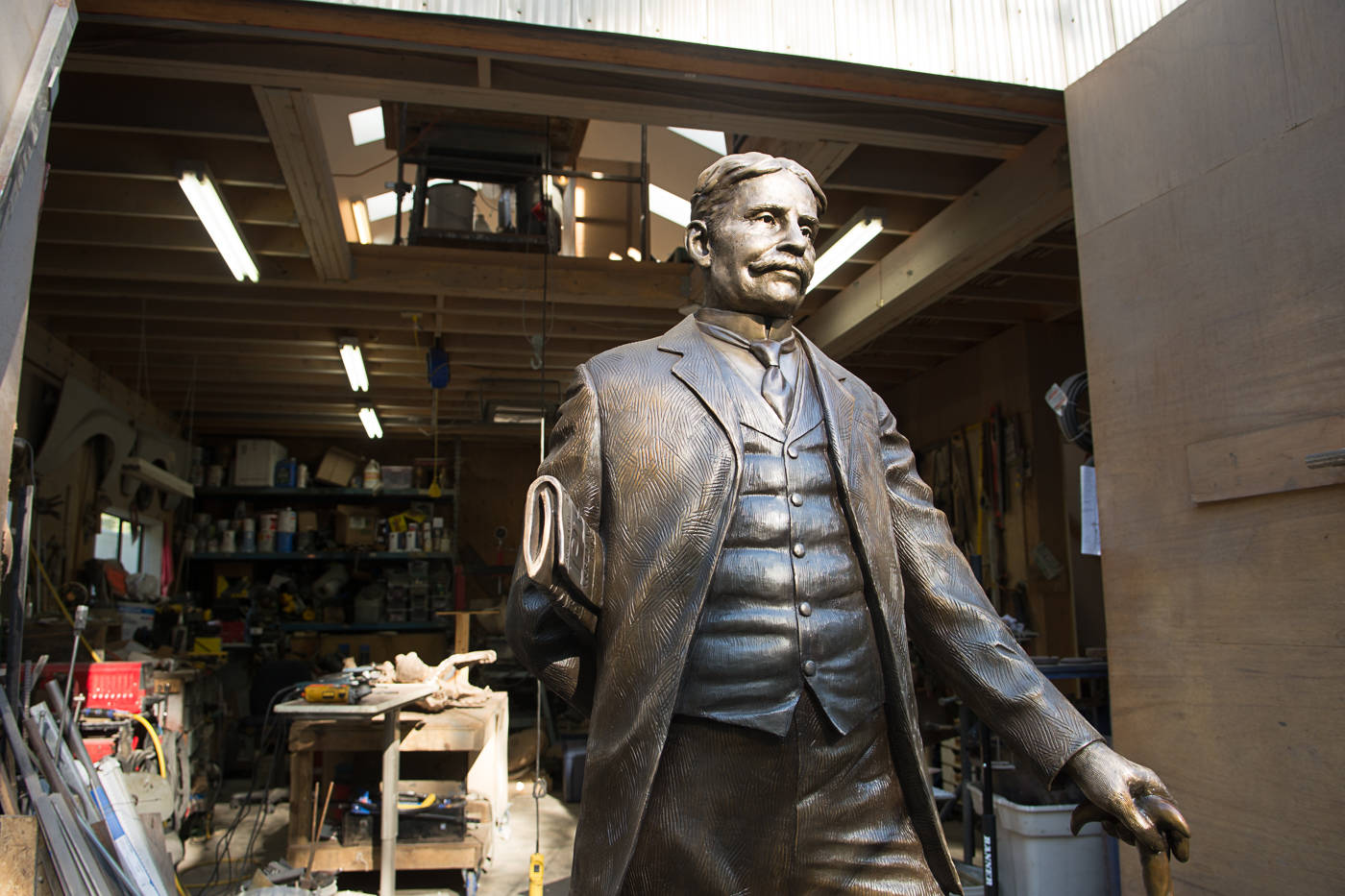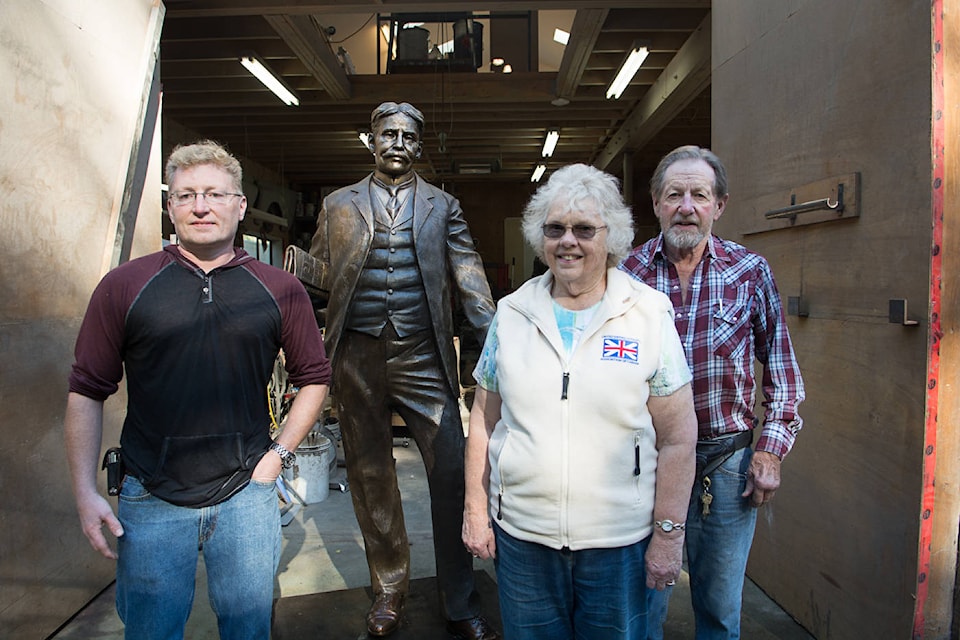When Nathan Scott was commissioned to make a sculpture of Robert Borden, he would eventually need a model to take reference photos. After a conversation with his wife, he found the right candidate quite closeby.
“My wife mentioned the Bordens and they live just down the road from us! I’ve known who the Bordens were for years but never the connection so I went over there and asked them. And they said yeah, that would be my great-great-great uncle.”
Ross Borden, who runs Borden Mercantile — a longtime animal feed supplier, was “a little wide in the shoulders” according to Scott, but was otherwise an apt choice.
“He’d already sculpted Robert Borden’s head, and he said he only wanted me for my body,” said Ross.
The younger Borden said he just posed for 10 to 15 minutes in a rented costume while Scott took reference photos from all angles.
Ross’ mother traced their lineage back to John Borden and his nephew Perry Borden, who moved from Rhode Island to Nova Scotia. John Borden is Ross’ five-times great grandfather and Perry Borden is [Robert’s] great grandfather.
Scott, who sculpted the Sidney bench-sitters “Mrs. Stone” and “Old Salty,” was contacted about a year and a half ago to be one of four sculptors across Canada responsible for 23 statues depicting the nation’s past prime ministers. He said he was chosen in part because an organizer of the project — Prime Ministers’ Walk — came to downtown Victoria and saw his sculpture of a young girl running into her arms of her father who had come home from sea, titled “Homecoming”. He began work on the Borden statue in February and only finished it on Monday.
By Wednesday (Oct. 18), the 485-pound statue will be on a truck to Toronto after about $800 in shipping fees. Eventually, it will end up in Baden, Ont., where it will be part of a sculpture garden that will eventually have all the Canadian prime ministers. Scott will fly over and install it himself on Nov. 3, which only takes about half an hour, before unveiling it on Nov. 6.
Scott said there are few photos of Borden, “so I had $100 bills all over my studio.” Scott chose the pose, but he was asked to include 15 or 16 themes into the sculpture, which exist as small details called ‘Easter eggs.’ For instance, the newspaper tucked under Borden’s arm is the Ottawa Citizen’s front page for Nov. 11, 1918, Armistice Day. The headline: “PEACE”. Symbols like the Freemason’s square and compass, the scales of justice and a broken heart (he died of a heart attack) are carved into his cane.
Scott was proud to be one of the artists selected and said he learned a lot about the wartime prime minister in the process: Borden signed the Treaty of Versailles instead of allowing Britain to represent the colony, introduced federal income tax, and was prime minister when women voted for the first time in a federal election.
“It’s nice to be able to sculpt history. Often we’re looking to the future and we forget our past, so it’s neat to be able to [sculpt] a guy like this,” said Scott.




